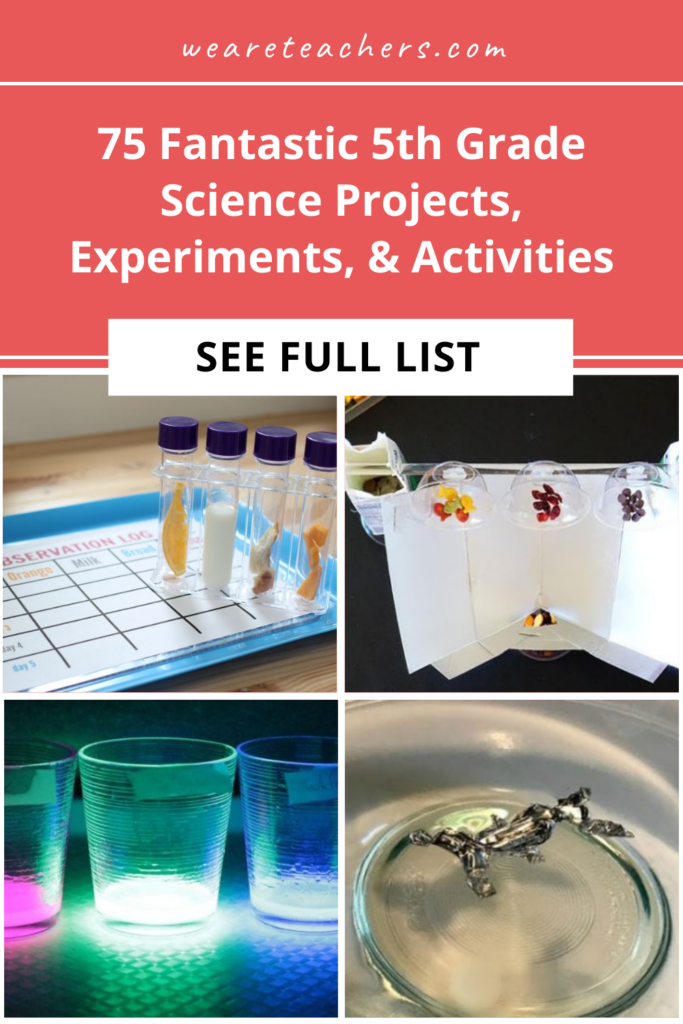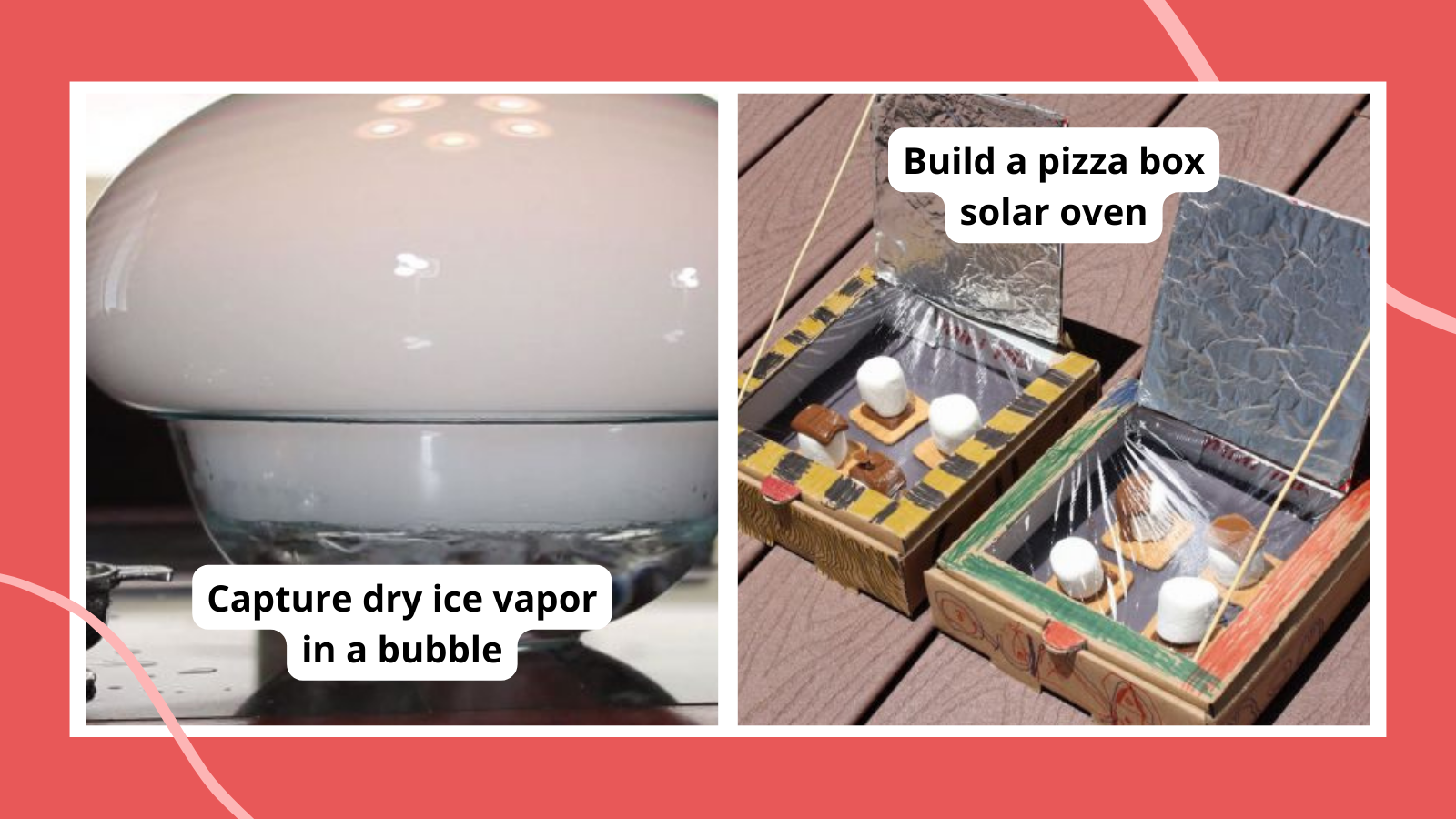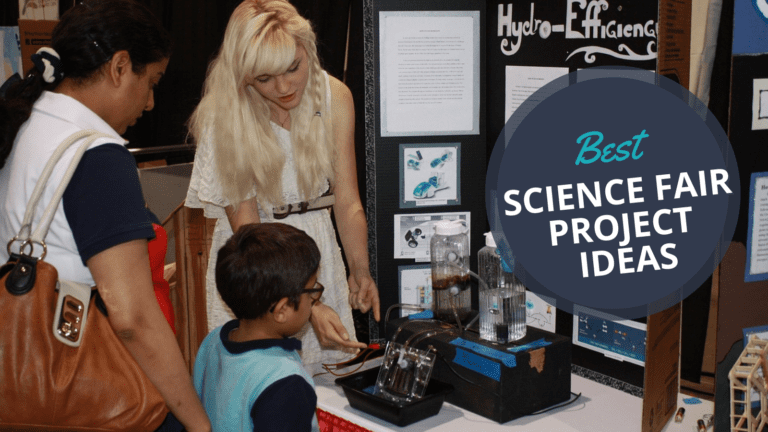There’s something so fascinating about hands-on science experiments and projects. They make learning so meaningful and so much fun! These 5th grade science projects help kids explore biology, physics, chemistry, and a whole lot more. Try one at the 5th grade science fair, or use a few to liven up your lesson plans.
To make things even easier, we’ve rated every one of these 5th grade science projects based on difficulty and materials:
Difficulty:
- Easy: Low or no-prep experiments you can do pretty much anytime
- Medium: These take a little more setup or a longer time to complete
- Advanced: Experiments like these take a fairly big commitment of time or effort
Materials:
- Basic: Simple items you probably already have around the house
- Medium: Items that you might not already have but are easy to get your hands on
- Advanced: These require specialized or more expensive supplies to complete
Jump to:
- 5th Grade Science Fair Projects
- STEM Challenge 5th Grade Science Projects
- 5th Grade Matter and Energy Science Activities
- More 5th Grade Science Projects and Activities
- Slime Science Projects
Plus, fill out the form on this page to grab your free printable bundle of science fair award certificates to honor your students’ efforts! There are more than 40 award categories included plus a customizable blank certificate for you to create your own awards.
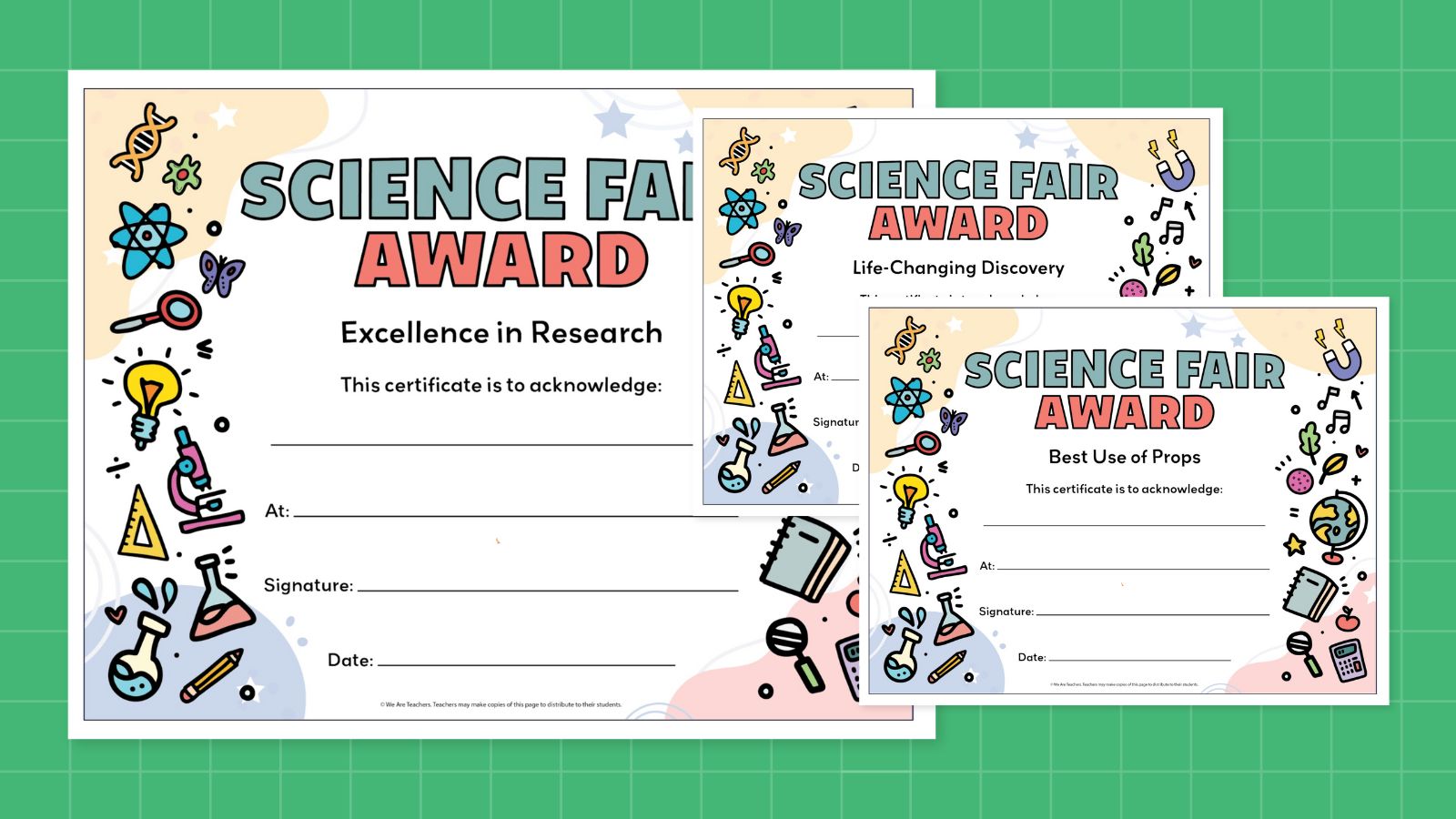
5th Grade Science Fair Projects
Choosing a science fair project means finding a subject that really interests you and coming up with a unique question to answer. Use some of these 5th grade science fair project ideas to create a cool experiment all your own.

1. Stop soil erosion with plants
Difficulty: Medium / Materials: Medium
Soil erosion is a serious problem that can lead to natural disasters like landslides as well as causing problems for farmers, who lose valuable topsoil. Try this experiment to learn how plants help keep soil in place naturally, and change up the variables like soil composition or types of plants.
Learn more: Soil Erosion Experiment
2. Blow square bubbles
Difficulty: Medium / Materials: Medium
Bubble science experiments are always a hit! In this one, kids construct a device to see if they can blow a square bubble instead of a round one.

3. Discover the delights of decomposition
Difficulty: Easy / Materials: Medium
This is a good chance to apply the scientific method and practice your observation skills, using only basic kitchen supplies. Ask the question: “Which food will rot (decompose) the fastest?” Have students hypothesize, observe, and then report their findings. Get a printable observation sheet at the link below.
Learn more: Food Decomposition
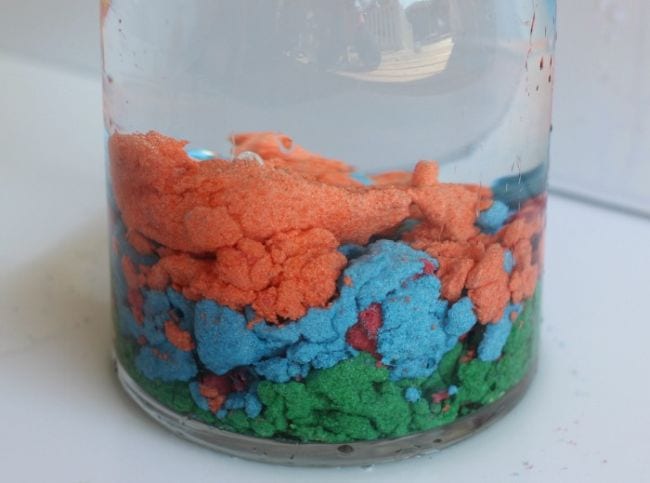
4. Mix up some magic sand
Difficulty: Easy / Materials: Medium
What if you could make sand that was “afraid” of water? This 5th grade science experiment uses waterproofing spray to create you-gotta-see-it-to-believe-it hydrophobic sand.
Learn more: Hydrophobic Sand
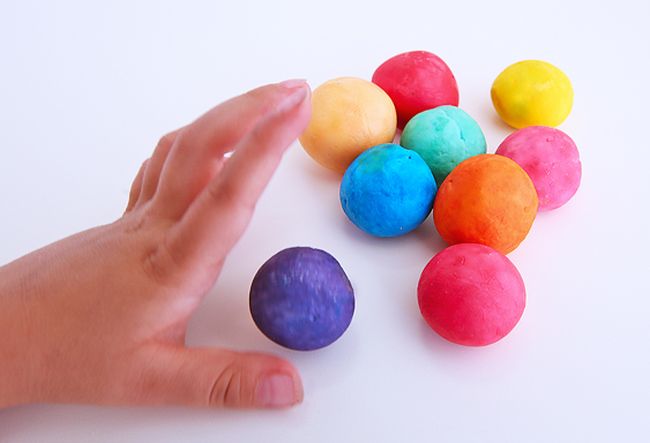
5. Make your own bouncy balls
Difficulty: Easy / Materials: Medium
Students learn about polymers as they mix borax with cornstarch, glue, and water in this playful experiment. Experiment with size, shape, and ingredients to see which work best.
Learn more: DIY Bouncy Balls
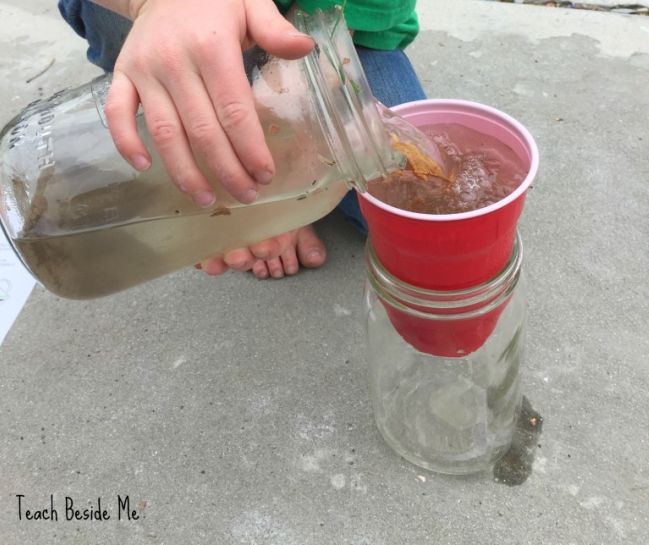
6. Study water filtration
Difficulty: Easy / Materials: Basic
See the process of water purification firsthand. Layer coffee filters, sand, and gravel in the bottom of an empty cup punched with holes. Place the cup in an empty jar, pour in dirty water, and watch what happens. Mix up the variables and you’ve got a cool 5th grade science fair project.
Learn more: Water Filtration Experiment

7. Find out if a dog’s mouth is cleaner than a human’s
Difficulty: Medium / Materials: Medium
Settle an age-old debate with this 5th grade science fair project. Collect saliva from both humans and canines with cotton swabs and place each sample in labeled petri dishes. Check the bacterial colonies in each and compare the results.
Learn more: Dog’s Mouth Project at Sciencing
8. Explore basic genetics
Difficulty: Easy / Materials: Basic
Watch this simple video to find out more about genes and inherited traits. You can have students try re-creating this Punnett square using different but possible scenarios.
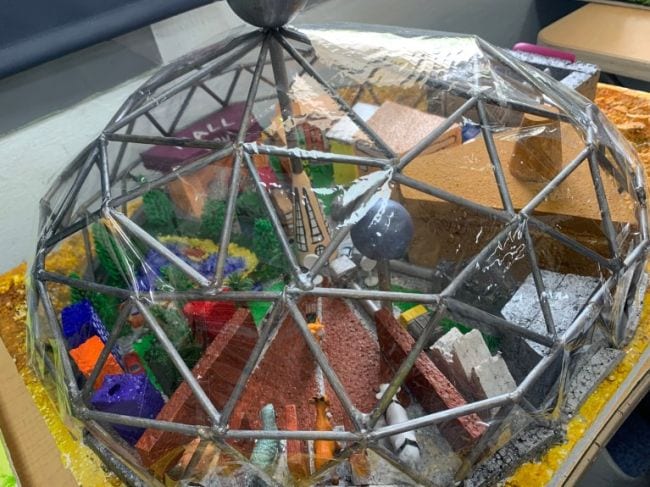
9. Design a biosphere
Difficulty: Medium / Materials: Medium
This project really brings out kids’ creativity and helps them understand that everything in a biosphere is really part of one big whole. You’ll be overwhelmed by what they come up with!
Learn more: Biosphere Project
10. Measure heat capacity
Difficulty: Medium / Materials: Advanced
Your students will venture into the world of physics with this experiment that tests the heat capacity of water. You’ll need to find the specific heat capacity of water using a power pack, a joulemeter, an electronic balance, and a calorimeter.
11. Hypothesize about climate change
Difficulty: Easy / Materials: Medium
This simple and easily re-created 5th grade science experiment can be used to make inferences and record findings on the effects of climate change.
12. Study greenhouse effects
Difficulty: Medium / Materials: Medium
This is a great idea for a 5th grade science fair project. Study the greenhouse effect while experimenting with chemical and endothermic reactions.
13. Test the pH levels of drinks
Difficulty: Medium / Materials: Medium
This is a fun 5th grade science project that might also encourage your kiddo to make healthier food choices! Gather as many different types of drinks as possible and then test the pH levels of each one to determine which are the most acidic versus which are the most neutral.
14. Fix prepackaged slime
Difficulty: Medium / Materials: Medium
This is a fun science fair project. Test different ways to improve upon different brands of store-bought slime.
15. Test different slime recipes
Difficulty: Easy / Materials: Medium
Fifth graders love slime, so here’s another fun science fair idea involving it. Test out different slime recipes and record the findings.
Learn more: Slime Recipes (Guide and Printable Reflection Sheet)
STEM Challenge 5th Grade Science Projects
A good STEM challenge can spark a terrific science fair project too. These also make terrific classroom activities for 5th grade science students.
16. Do the Egg Drop Challenge
Difficulty: Medium / Materials: Medium
Challenge your students to create a vessel to protect an egg from breaking when dropped from a high height. Students will learn about energy and momentum as they experiment with different ways to buffer the collision of the egg with earth.
Learn more: Egg Drop Challenge Ideas
17. Levitate an eyeball
Difficulty: Easy / Materials: Basic
This is a fun 5th grade science project to do during the month of October or even on Halloween. Draw an eye on a Ping-Pong ball and then use a hair dryer to keep it afloat. It’s a great lesson on air pressure.
18. Create a self-powered boat
Difficulty: Medium / Materials: Basic
This elastic-powered boat will amaze your 5th graders. You only need a few basic materials to make it.
19. Make a pyramid catapult
Difficulty: Easy / Materials: Basic
Help ignite a love of engineering with this simple project. Take 2D triangles to the next level by building this catapult.
20. Make a mini robot bug
Difficulty: Medium / Materials: Medium
This project is a great introduction to building a simple circuit. Once students know the basics, they can experiment with making other robots out of household materials plus a few extras like an LED, batteries, wires, and a vibrating motor.
21. Play a balancing game
Use Popsicle sticks and wooden dowels perched atop paper cups to balance a cup of water. It’s all about each stick supporting another in this game of equilibrium.
22. Assemble an automatic water fountain
Difficulty: Medium / Materials: Medium
Water fountains were around long before humans harnessed the power of electricity to make pumps. Learn how they worked with this STEM challenge science project for 5th grade.
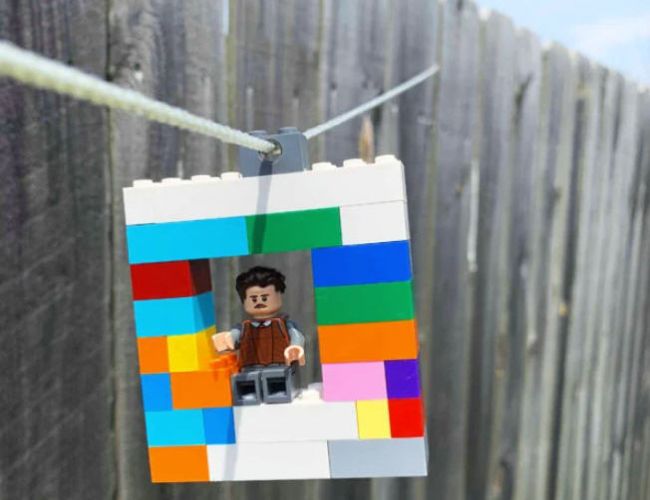
23. Race down a LEGO zip line
Difficulty: Medium / Materials: Medium
Every kid loves LEGO bricks, so incorporate them into your 5th grade science activities! Challenge kids to design and build their own zip line. You can set the parameters, like distance and slope, then let students get to work.
Learn more: LEGO Zip Line
24. Slow your roll
Difficulty: Medium / Materials: Medium
Ball-run challenges are always fun, but this one has a twist. Your goal is to build a run that gets the ball to the bottom taking the longest time possible! This requires kids to think about friction, slopes, and other creative features.

25. Fly clothespin airplanes
Difficulty: Medium / Materials: Medium
Put your 5th grade science students’ engineering skills to the test. Provide them with clothespins and wood craft sticks, and challenge them to build a realistic airplane. Bonus points if it can actually fly!
Learn more: Clothespin Airplane
26. Spin a candle-powered pinwheel
Difficulty: Medium / Materials: Medium
Prove that hot air rises by using candles to spin a homemade pinwheel. Then experiment to see how the number of candles affects the spinning speed. (As always, make sure kids use fire under safe conditions.)
27. Set off a chain reaction
Difficulty: Medium / Materials: Medium
Learn about potential and kinetic energy when you try this cool 5th grade science experiment. All you need are wood craft sticks and a bit of patience.
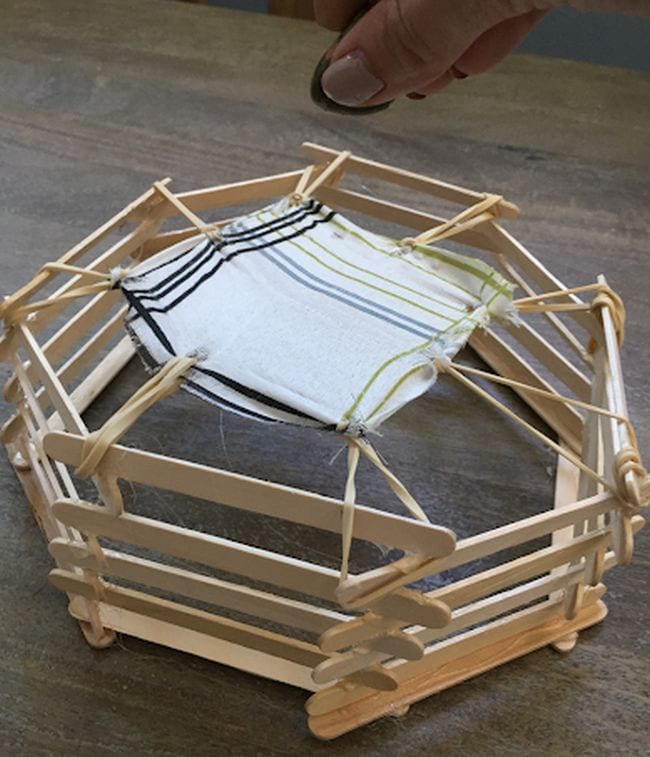
28. Bounce on a trampoline
Difficulty: Medium / Materials: Medium
Kids love bouncing on trampolines, but can they build one themselves? Find out with this totally fun STEM challenge. Plus, check out more 5th grade STEM challenges here.
Learn more: Trampoline STEM Challenge
29. Build a solar oven
Difficulty: Medium / Materials: Medium
Learn about the value of solar energy by building an oven that cooks food without electricity. Enjoy your tasty treats while discussing ways we can harness the energy of the sun and why alternative energy sources are important.
Learn more: Solar Oven Project (Guide + Printable Reflection Sheet)
30. Launch your own bottle rocket
Difficulty: Medium / Materials: Medium
Blast off with a few supplies and a little help from the laws of motion. Encourage kids to design and decorate their rockets first and see which one can fly the highest.
Learn more: Bottle Rocket Experiment (Guide + Printable Reflection Sheet)
31. Peer through a cardboard microscope
Difficulty: Medium / Materials: Medium
Microscopes can be pricey, so make your own at home! This is the kind of 5th grade science fair project that will really wow the judges.

32. Build a snack machine
Difficulty: Medium / Materials: Medium
Incorporate everything students learn about simple machines into one project when you challenge them to build a snack machine! Using basic supplies, they’ll need to design and construct a machine that delivers snacks from one location to another. (Get more candy experiments here.)
Learn more: Snack Machine Challenge

33. Use rubber bands to sound out acoustics
Difficulty: Easy / Materials: Basic
Explore the ways that sound waves are affected by what’s around them using a simple rubber band “guitar.” (Your students will absolutely love playing with these!)
Learn more: Sound Absorption and Reflection Experiment
34. Assemble Archimedes’ screw
Difficulty: Medium / Materials: Basic
It’s amazing how often science looks like magic—until you understand the principles behind it. Such is the case with the simple pump known as Archimedes’ screw. It’s easy to build your own and makes for a cool 5th grade science fair project.
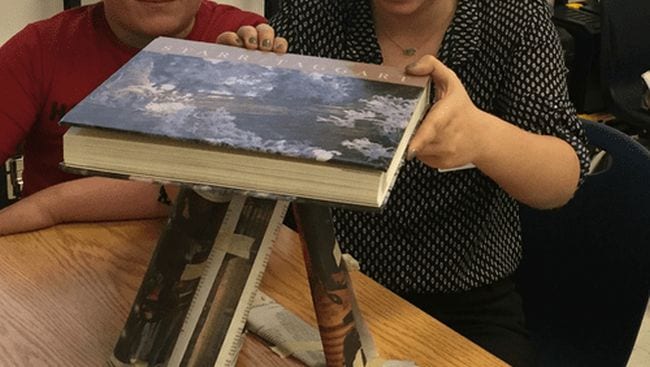
35. Recycle newspaper into an engineering challenge
Difficulty: Easy / Materials: Basic
It’s amazing how a stack of newspapers can spark such creative engineering. Challenge students to build a tower, support a book, or even build a chair using only newspaper and tape.
Learn more: Newspaper STEM Challenge
36. Construct a sturdy bridge
Difficulty: Medium / Materials: Medium
To design a safe bridge that meets the needs of the community, engineers must understand the capabilities and limitations of the bridge. This project is great for budding 5th grade engineers as they simulate constructing a bridge that serves its purpose and keeps community members safe.
5th Grade Matter and Energy Science Activities
Every 5th grade science curriculum is different, but many include some common concepts. Learn about the states of matter, matter and its interactions, and energy science with these neat 5th grade activities.
37. Model the states of matter
Difficulty: Medium / Materials: Medium
Create simple models to show the arrangement of molecules in solids, liquids, and gasses. Ping-Pong balls are perfect for this. (Find more states of matter activities here.)
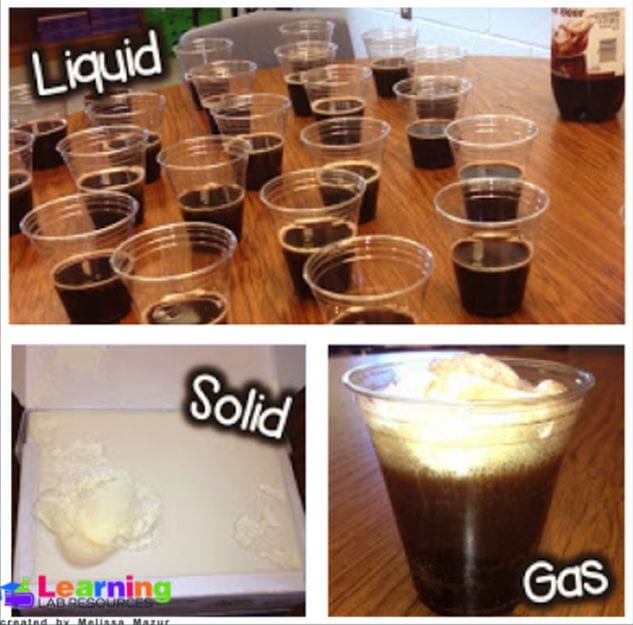
38. Drink root beer floats
Difficulty: Easy / Materials: Medium
This is our favorite way to learn about the various states of matter! Treat time becomes a learning lesson with this 5th grade science matter activity.
Learn more: Teaching Matter With Root Beer Floats
39. Fill a bubble with dry ice vapor
Difficulty: Medium / Materials: Medium
Discover the science of sublimation by turning dry ice from a solid directly into a gas. Then play around with surface tension as the resulting vapor fills a giant bubble. This one is so cool to see in action!

40. Discover density with hot and cold water
Difficulty: Medium / Materials: Basic
There are a lot of cool science experiments you can do with density. This one is very simple, involving only hot and cold water and food coloring.
Learn more: Hot and Cold Water Density Experiment
41. Whip up some magic milk
Difficulty: Easy / Materials: Basic
This is a very simple experiment, but it includes a lot of lessons. Fifth grade science students can learn about surface tension and chemical reactions between molecules using just a few ingredients.
Learn more: Magic Milk Experiment (Guide + Printable Reflection Sheet)
42. Light(ning) it up indoors
Difficulty: Easy / Materials: Basic
Use some everyday objects to create a “lightning storm” in your classroom. Turn down the lights to give students a better view of the static electricity you’re creating.
43. Create convection currents
Difficulty: Easy / Materials: Basic
This easy experiment uses potassium permanganate to explore the thermal and kinetic energy that creates convection currents. Take things a step further and research how convection currents work in large bodies of water like oceans.
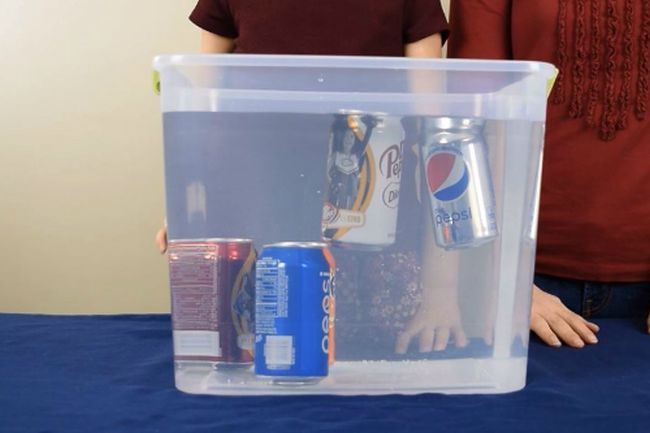
44. Sink or swim with soda cans
Difficulty: Easy / Materials: Basic
Here’s another easy density experiment. Place unopened cans of regular and diet soda into a bin of water to see which float and which sink. The differences are due to the use of sugar vs. artificial sweeteners.
Learn more: Sink or Swim Soda Can Science Experiment

45. Find out if water conducts electricity
Difficulty: Medium / Materials: Medium
We always tell kids to get out of the water as a storm approaches. This 5th grade science project helps explain why. (Conductivity vs. non-conductivity is one of the properties of matter too.)
Learn more: Electricity and Water Experiment
46. Blow up a balloon—without blowing
Difficulty: Easy / Materials: Medium
This is the classic science experiment that helps you teach the reactions between acids and bases, plus what happens when you mix different substances together. Fill a bottle with vinegar and a balloon with baking soda. Fit the balloon over the top, shake the baking soda down into the vinegar, and watch the balloon inflate.
Learn more: Baking Soda Balloon Experiment (Guide + Printable Reflection Sheet)
47. Play with salt and Orbeez
Difficulty: Easy / Materials: Medium
Orbeez water beads are fun for all ages (yes, even adults), and they can be used to learn about osmosis. Students will be amazed as the introduction of the salt causes the water to be drawn out of the Orbeez beads due to the higher osmotic pressure.
More 5th Grade Science Projects and Activities
Use these hands-on science activities to spice up your lesson plans or as enrichment projects for science-loving kids to try at home.
48. Erupt a baking soda volcano
Difficulty: Medium / Materials: Medium
Need a 5th grade science fair project? Go with a classic: the volcano! This one’s made from salt dough, which is easy to work with and inexpensive to make.
Learn more: Baking Soda Volcano Experiment (Guide + Printable Student Recording Sheet)
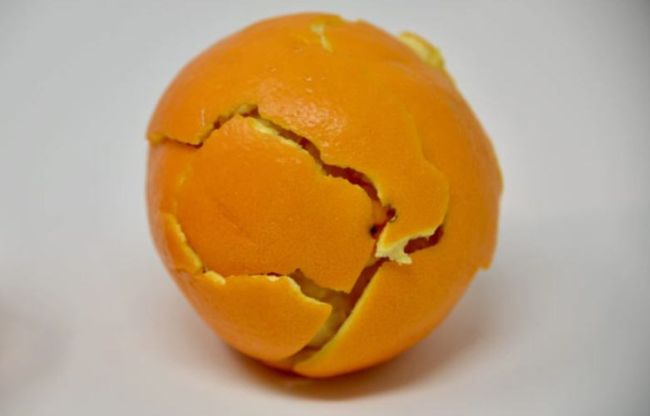
49. Peel an orange to understand plate tectonics
Difficulty: Medium / Materials: Medium
If students are learning earth science, use an orange to make plate tectonics easier to understand. Peel it, then reassemble it and look at the pieces as plates floating on Earth’s mantle.
Learn more: Orange Peel Plate Tectonics
50. Discover the strength of eggshells
Difficulty: Easy / Materials: Basic
We think of eggshells as very fragile, but their shape makes them surprisingly strong. Try this experiment to learn why arches are such a useful shape in architecture.
51. Demonstrate the “magic” leakproof bag
Difficulty: Easy / Materials: Basic
So simple and so amazing! All you need is a zip-top plastic bag, sharp pencils, and some water to blow your students’ minds. Once they’re suitably impressed, teach them how the “trick” works by explaining the chemistry of polymers.
Learn more: Pencil Through a Bag Experiment (Guide + Printable Reflection Sheet)

52. Explore the science of glow sticks
Difficulty: Easy / Materials: Medium
Glow sticks are always a big hit with kids, so they’ll have a terrific time learning about the chemical reactions that make glow sticks work.
Learn more: Glow Stick Science Experiment
53. Grow crystal snowflakes
Difficulty: Medium / Materials: Medium
Kids love crystal projects, and this one results in winter decorations for your classroom. Your students will learn about supersaturated solutions and crystallization. (See more winter science activities here.)
54. Escape from quicksand
Difficulty: Easy / Materials: Basic
Dive deep into the science of quicksand and learn about saturation and friction along the way. You’ll create a small “quicksand” pool from cornstarch and water, then experiment to find out the best ways to escape.

55. Watch the heart beat with marshmallows
Difficulty: Easy / Materials: Medium
If you can get your 5th grade science class to quiet down enough for this one, they might be able to see a marshmallow jump with each beat of their hearts!
Learn more: Heartbeat Marshmallows

56. Make a foil bug walk on water
Difficulty: Easy / Materials: Basic
Surface tension allows water striders to dance across the surface of the water. Re-create this scientific phenomenon with little “bugs” made of aluminum foil.
Learn more: Water Strider STEM Activity
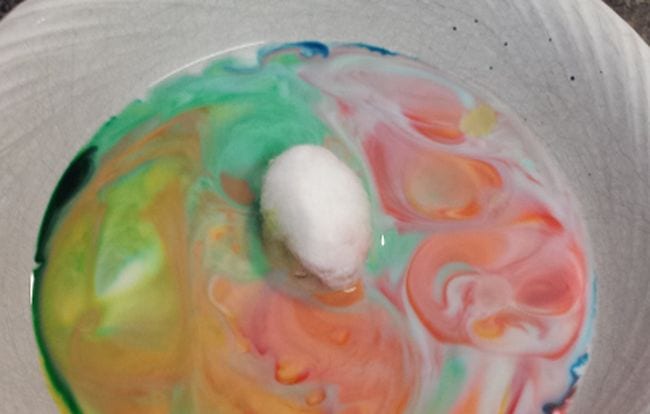
57. Find out how bile breaks down fat
Difficulty: Easy / Materials: Basic
Learning about the digestive system? This 5th grade science demo explores the purpose of the bile produced by the liver, which breaks down fat.
Learn more: Bile Experiment
58. Construct a homemade lava lamp
Difficulty: Easy / Materials: Basic
This 1970s trend is back—as a 5th grade science project! Learn about acids and bases while putting together a totally groovy lava lamp.
59. Investigate osmosis with gummy bears
Difficulty: Easy / Materials: Medium
Gummy bears are not only tasty, but they can also help teach your 5th graders about the concepts of osmosis and equilibrium as well as solvents and solute.

60. Replicate a sunset
Difficulty: Easy / Materials: Medium
With just water, milk powder, a flashlight, and a glass dish, your 5th graders will investigate why the sky appears to change colors as the sun sets.
Learn more: Sunset Sky STEM Experiment
61. Defy gravity with floating water
Difficulty: Easy / Materials: Basic
This one might cause a bit of a mess, but it’s only water, and it’s all in the name of your students discovering air pressure. All you’ll need is a cup, index card, water, and crossed fingers that your classroom doesn’t become a puddle!

62. Model constellations
Difficulty: Easy / Materials: Medium
Space delights students of all ages. The mystery and mystique is intriguing, and creating a constellation out of pipe cleaners is a fun STEM activity to explore the night sky.
Learn more: Constellations Model
63. Elephant toothpaste explosion
Difficulty: Medium / Materials: Medium
This experiment works through a chemical reaction that results from a catalyst (potassium iodide, aka yeast) being introduced into a mixture of hydrogen peroxide and dish soap. The hydrogen peroxide is decomposed into water and oxygen and the catalyst speeds up the reaction, forcing the oxygen into the soap bubbles. The resulting effect is the substance quickly pouring up and out of the container.
Try it: Elephant Toothpaste Experiment (Guide + Printable Reflection Sheet)
64. Learn about air pressure
Difficulty: Easy / Materials: Easy
This one is so simple but is sure to amaze your students. All you’ll need is a bowl, a glass, a paper towel, and some water.
65. Mix up some chalk paint
Difficulty Medium / Materials: Medium
You might think you’re baking at first since you’ll need water, cornstarch, food coloring, a measuring bowl, and a muffin tin. Really though, you’ll be making sidewalk paint chalk! Grab some foam brushes and head outside on a nice day to experiment with it.
Learn more: How To Make Chalk Paint (Guide + Printable Reflection Sheet)
66. Make a spinning doll
Difficulty: Easy / Materials: Medium
Make a new toy while learning about magnetism and magnetic fields. Cupcake toppers would work well as the spinning object. You can purchase the ring magnets at Amazon.
67. Have a blast with Mentos and coke
Difficulty: Easy / Materials: Basic
Before getting started, have your students create funnels from card stock. Once you’re ready to try the experiment, you’ll want to head outside because things might get messy. Drop the Mentos into the top of a Coke bottle using the funnel, and then watch the explosion!
Learn more: Mentos and Coke Experiment (Guide + Printable Reflection Sheet)
68. Mix an egg with some vinegar
Difficulty: Easy / Materials: Basic
This is a great way to safely demonstrate a chemical reaction. Simply have students drop an egg into a cup of vinegar and then wait a few days to see the progression. They’ll be amazed by the egg’s transformation into a bouncy ball of sorts!
Learn more: Egg and Vinegar Experiment (Guide + Printable Reflection Sheet)
69. Make popcorn dance
Difficulty: Easy / Materials: Basic
A little baking soda, vinegar, and popcorn are perfect for a lesson on density and acid-base reactions. We love 5th grade science projects like this one that the kids can do themselves!
Learn more: Dancing Popcorn (Guide + Reflection Sheet)
70. Defy gravity
Difficulty: Easy / Materials: Basic
Demonstrate the chain fountain, or Mould effect, using nothing more than a cup and 50 feet of beads. When the beads are pulled out of the cup, gravity pulls them up and out of the cup like an invisible siphon.
Slime Science Projects
Looking for more unique ways to make slime? Check out the recipes below.
71. Try out some butter slime
Difficulty: Easy / Materials: Basic
We love slime at We Are Teachers. Not only is it super fun and a hit with any 5th grade class, it also teaches about chemical reactions and molecules. Butter slime is a fun twist on an old favorite thanks to the secret ingredient: Model Magic!
72. Whip up some fluffy slime
Difficulty: Easy / Materials: Medium
What’s better than a slime recipe? A fluffy slime recipe!
Learn more: How To Make Fluffy Slime (Guide + Printable Reflection Sheet)
73. Make glitter slime
Difficulty: Easy / Materials: Medium
This slime recipe calls for some interesting ingredients like contact lens solution and, of course, glitter! In addition to being a great sensory experience, slime teaches viscosity. Take the opportunity to introduce students to the concept of a non-Newtonian fluid.
74. Experiment with magnetic slime
Difficulty: Easy / Materials: Medium
Slime is obviously a favorite science experiment for kids, but the addition of iron filings really takes this up a notch. Get some magnets and let kids experiment with the magnetism.
75. Go simple
Difficulty: Easy / Materials: Easy
This is just so simple! Grab some cornstarch and dish soap and make the perfect slime. Use it as an opportunity to introduce the concept of states of matter.
Get your free printable science fair awards!
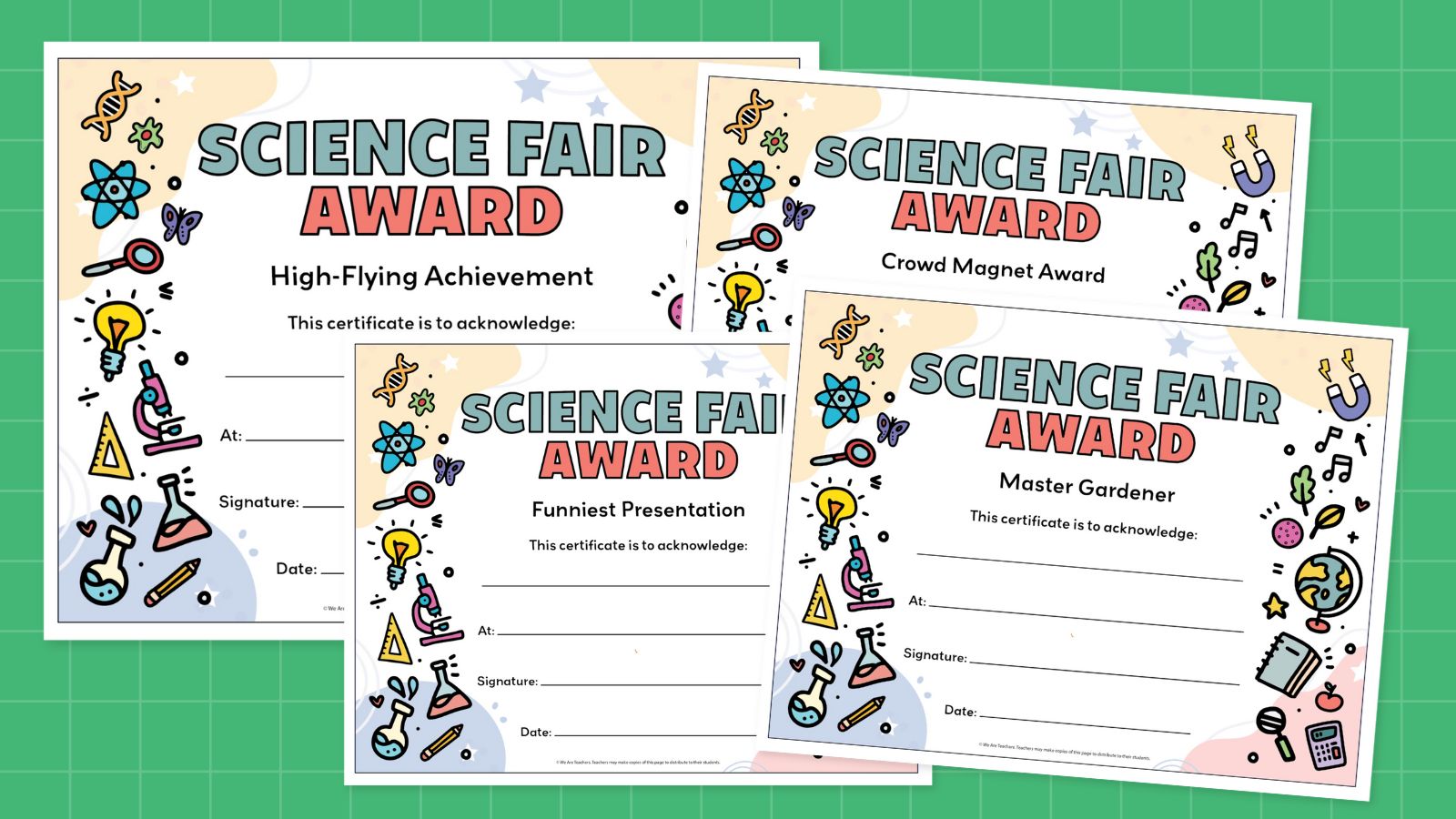
If you’re organizing a science fair, make sure to grab our free printable bundle of award certificates with more than 40 categories along with a customizable blank certificate so you can create your own awards.
Continue the STEM learning with these 5th Grade Math Games for Teaching Fractions, Decimals, and More.
Plus, sign up for our newsletters to get all the latest teaching tips and ideas straight to your inbox.
